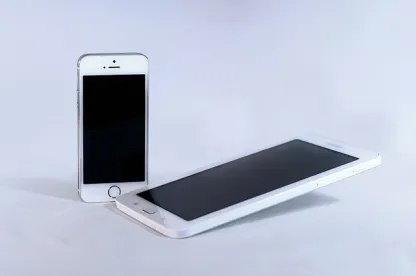On December 6, 2016, the U.S. Supreme Court issued a decision that could significantly impact the value of some design patents and the scope of damages available for their infringement. In Samsung Electronics Co., Ltd. v. Apple Inc., No. 15-777, slip op. (U.S. Dec. 6, 2016), the Supreme Court rejected the Federal Circuit’s ruling that damages for design patent infringement under 35 U.S.C. § 289 must be based on the entire infringing product (i.e., the end product sold to a consumer).
Section 289 provides, in relevant part, as follows:
“Whoever during the term of a patent for a design, without license of the owner, (1) applies the patented design, or any colorable imitation thereof, to any article of manufacture for the purpose of sale, or (2) sells or exposes for sale any article of manufacture to which such design or colorable imitation has been applied shall be liable to the owner to the extent of his total profit . . . .”
35 U.S.C. § 289 (emphasis added). Following the 2012 trial, a jury awarded Apple nearly $400 million in damages under § 289 for Samsung’s infringement of multiple Apple design patents—a damages award that reflected the entire profit Samsung made from its sales of infringing smartphones. Samsung Elecs. Co., Ltd., No. 15-777, slip op. at 4.
On appeal, Samsung argued that the profits awarded under § 289 should have been limited to the infringing “article of manufacture”—the screen or case of the smartphone covered by the design patents—not the entire smartphone. Apple Inc. v. Samsung Elecs. Co., Ltd., 786 F.3d 983, 1002 (Fed. Cir. 2015). The Federal Circuit, however, interpreted the statutory term “article of manufacture” to cover only an end product sold to a consumer. Id. The Federal Circuit therefore rejected Samsung’s arguments, reasoning that “limit[ing] the damages” award was not required because the “innards of Samsung’s smartphones were not sold separately from their shells as distinct articles of manufacture to ordinary purchasers.” Id.
The Supreme Court disagreed with the Federal Circuit’s statutory construction, criticizing it as “too narrow.” Samsung Elecs. Co., Ltd., No. 15-777, slip op. at 8. Unlike the Federal Circuit, the Supreme Court found that the term “‘[a]rticle of manufacture’ has a broad meaning”—“simply a thing made by hand or machine”—consistent with other sections of the Patent Act. Id. at 6-7 (quotations omitted). The Supreme Court therefore held that “the term ‘article of manufacture’ is broad enough to embrace both a product sold to a consumer and a component of that product, whether sold separately or not,” reversing the Federal Circuit’s affirmance of Apple’s nearly $400 million damages award and remanding the case for further proceedings. Id. at 8-9. Notably, the Supreme Court declined to set forth a test for identifying the relevant article of manufacture under § 289, leaving that question open on remand.
Going forward, parties accused of infringing others’ design patents or exploring enforcement of their own design patent rights will need to consider Samsung when evaluating potential damages exposure or the scope of potential recovery.






 />i
/>i

